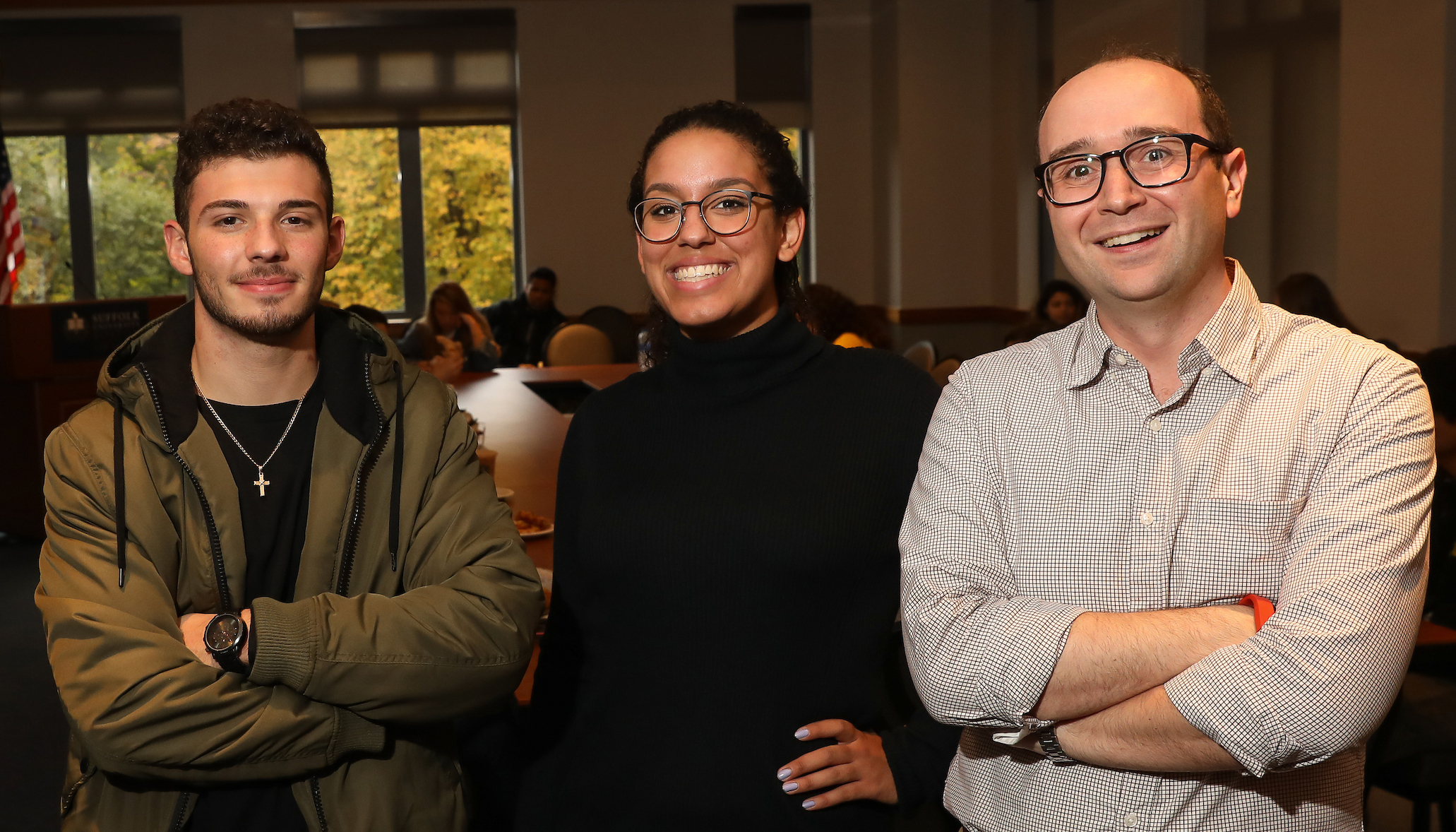Homing in on the Truth

Homing in on the Truth
Alyssa Barahona and Michael Balestra have big dreams—she wants to be a journalist; he aspires to become a lawyer—and both understand that “finding the truth” is the ultimate goal in those careers.
And these first-year students are questioning almost everything around them through the Seminar for Freshmen course “What is a Fact?”
As they examine works of literature, art, science, and history, they are focused on how facts are created and truth value is determined.
“Colleges are fact factories, and understanding facts is essential to college students, who must learn to use reliable sources in order to create credible work,” said course instructor Nick Frangipane of the English Department. “Through their research, students get to manufacture knowledge and discover facts. They then have to check those facts to make sure that they’re true.”
Questioning everything
The course has helped Barahona become more diligent about fact-finding and discovering the different ways that the truth can be interpreted.
Frangipane “teaches you to question everything from different perspectives and to always check and re-check your sources,” said Barahona, Class of 2022, a communication & journalism major who plays on the women’s soccer team. “He is really good at getting you to think a different way.”
With the rise of “fake news,” whether actual or implied, verifying the truth can be a daunting task.
“I like to know what’s true and what’s a lie,” said Balestra, Class of 2022, a political science major, and member of the indoor and outdoor track squad. “I’m learning to become more detailed in analyzing what I see and what I hear, and I’m finding out how the world isn’t as clear-cut as it seems.”
True or false?
“Information literacy is a hot topic in our society today more than ever,” said Frangipane. “I try to make sure that students see all of the misinformation out there and know what is true and what is false.”
The course is designed to enhance students’ creative and critical thinking skills. As part of the curriculum, students gain valuable knowledge through resources available at the University and within the city of Boston.
Field trips and guest speakers
The class visited the Museum of Fine Arts to see the video installation “Love Story” by Candice Breitz, which was closely connected with a course reading, the novel, HHhH by Laurent Binet.
“We went to this exhibit because stories are an important way that we convey information and facts, but narrative form often requires information to take a particular shape,” said Frangipane.
Students also toured the WBUR NPR news station, where they had the opportunity to learn how news is gathered and facts are checked.
“We asked questions about how they fact-check, find reliable sources, and make sure their information is accurate from multiple sources,” said Barahona. “This is the field I want to get into, so going to WBUR gave me more of a perspective on the real world of news.”
Students also learned the legal definition of “truth” from Suffolk Law Professor Erin Braatz.
Balestra, who says that he’s wanted to be a lawyer since middle school, paid close attention.
“Hearing her talk gave me insight into her daily life and the different situations she has encountered dealing with the law…and excited about hopefully becoming a lawyer someday,” said Balestra.
Contact
Tony Ferullo
Office of Public Affairs
617-573-8448
Greg Gatlin
Office of Public Affairs
617-573-8428



